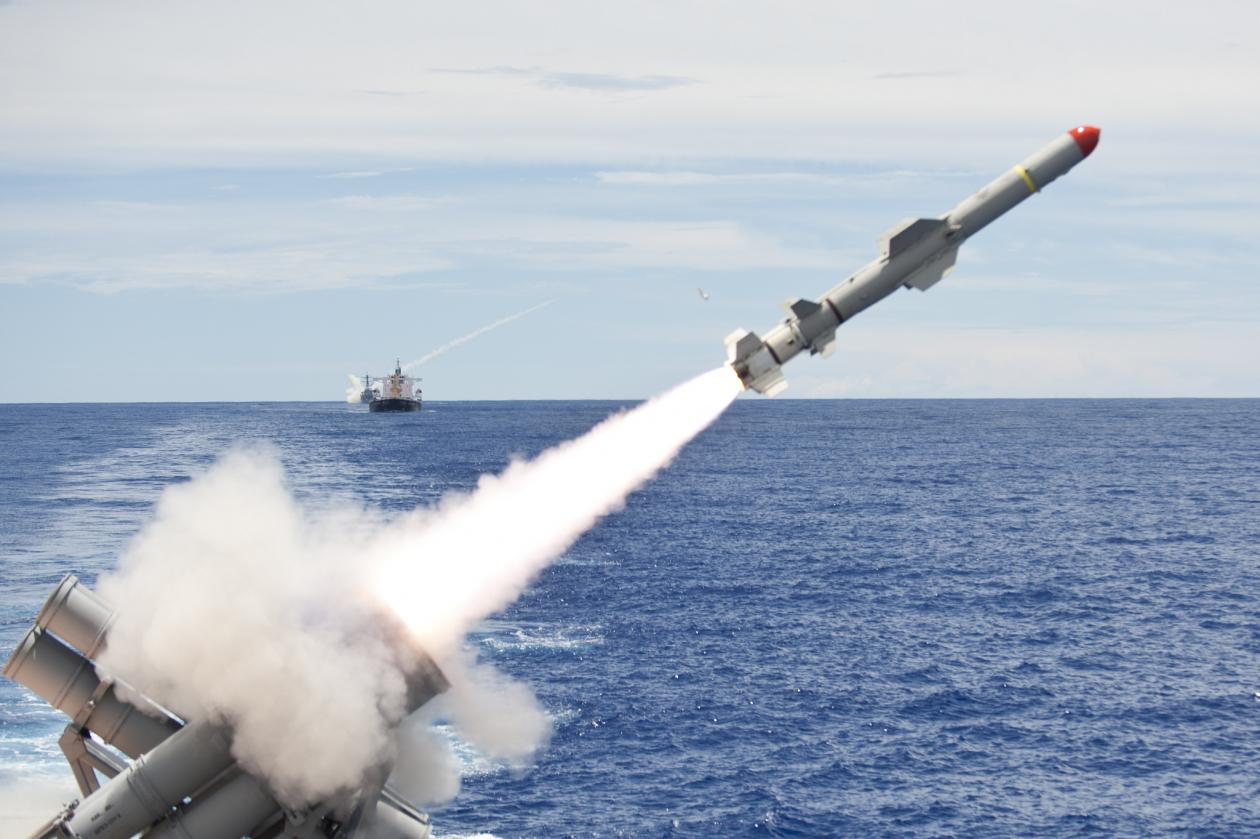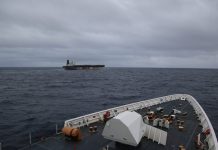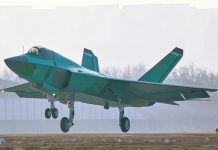In a big boost to the Indian Navy, the US has approved the sale of Harpoon over-the-horizon anti-ship missile test kit to India, the Defense Security Cooperation Agency (DSCA) said.
The Harpoon is expected to enhance the combat capability of the Indian Navy at a time when China is making forays into the Indian Ocean Region. The two nuclear-armed neighbors have been locked in a border standoff in the Himalayas for more than a year now.
“The State Department has made a determination approving a possible Foreign Military Sale to the Government of India of Harpoon Joint Common Test Set (JCTS) and related equipment for an estimated cost of $82 million,” the DSCA said in a press release.
The DSCA delivered the required certification notifying US Congress of this possible sale on August 2, the release said.

The Harpoon is an all-weather, over-the-horizon, anti-ship missile, developed and manufactured by McDonnell Douglas (later merged with Boeing) that uses active radar homing and flies just above the water to evade air defenses.
The missile can be launched from fixed-wing aircraft without a solid-fuel rocket booster, from surface ships when fitted with a solid-fuel rocket booster, and from submarines when fitted with a solid-fuel rocket booster and encapsulated in a container to enable submerged launch through a torpedo tube, according to reports.
The Harpoon provides the Navy and the Air Force with a common missile for air, ship, and submarine launches. The weapon system uses mid-course guidance with a radar seeker to attack surface ships.
Its low-level, sea-skimming cruise trajectory, active radar guidance, and warhead design ensure high survivability and effectiveness. The Harpoon missile and its launch control equipment provide a capability to interdict ships at ranges well beyond those of other aircraft.
The major system components of the Harpoon Block II missile include a booster, launch support structure, and canisters, as well as a command and launch system.
The 500lb penetration, high-explosive blast warhead provides the missile with sufficient firepower to destroy coastal defense and surface-to-air missile sites, aircraft, port / industrial installations, and docked ships.
The ship-launched Harpoon Block II has a length of 4.62m, while the length of the air-launched missile is 3.84m. The diameter of the missile is 34.3cm, while its weight varies between 526kg and 690.8kg based on the launch configuration.
In April 2020, the US approved the sale of 16 MK 54 lightweight torpedoes and 10 AGM-84L Harpoon Block II air-launched missiles to India for $155 million. As per the Defence Security Cooperation Agency’s (DSCA) press release, the proposed sale was said to enhance India’s interoperability with the United States and other allied forces.
How Will Harpoon Missiles Benefit India?
The DSCA further stated that “India will use the enhanced capability as a deterrent to regional threats and to strengthen its homeland defense” and that the deal will “improve the security of a major defensive partner, which continues to be an important force for political stability, peace, and economic progress in the Indo-Pacific and South Asia region”.
Inside The F-35 Lighting II Aircraft: What Makes The US Stealth Fighter Jets Truly ‘Invincible’
According to many officers in the US Navy, the Harpoons were initially designed during the Cold War era. However, as the nature of the conflict changed and the Russian threat had also declined, the Harpoons were not as popular with the US defense establishment.
Instead, the US thought of investing in newer and better weapons, which were lighter, faster, and not easily detectable. Even so, it is a good weapon system for the Indian military as the Harpoons have reportedly displayed “satisfactory performance” many times.
During the RIMPAC (Rim of the Pacific) exercise in 2018, the Harpoons were able to hit all of the six targets successfully.
“No question… From my perspective, it worked flawlessly” was what Commander of US Pacific Fleet’s Submarine Force Rear Admiral Daryl Caudle said of the Harpoon.
Currently, the Indian Navy faces a resource crunch and needs to make smart decisions. Harpoons offer an economical, more familiar alternative (India first purchased 24 AGM-84L Block II Harpoons in 2010 for the Indian Air Force), according to Nitin J Ticku, a defense analyst with the EurAsian Times.
Last year, India test-fired the naval variant of BrahMos supersonic cruise missile from the Andaman and Nicobar Islands territory. The BrahMos missile has now been inducted into all three services of the Indian military.
Co-authored by Kashish Tandon. With inputs from Sputnik News




